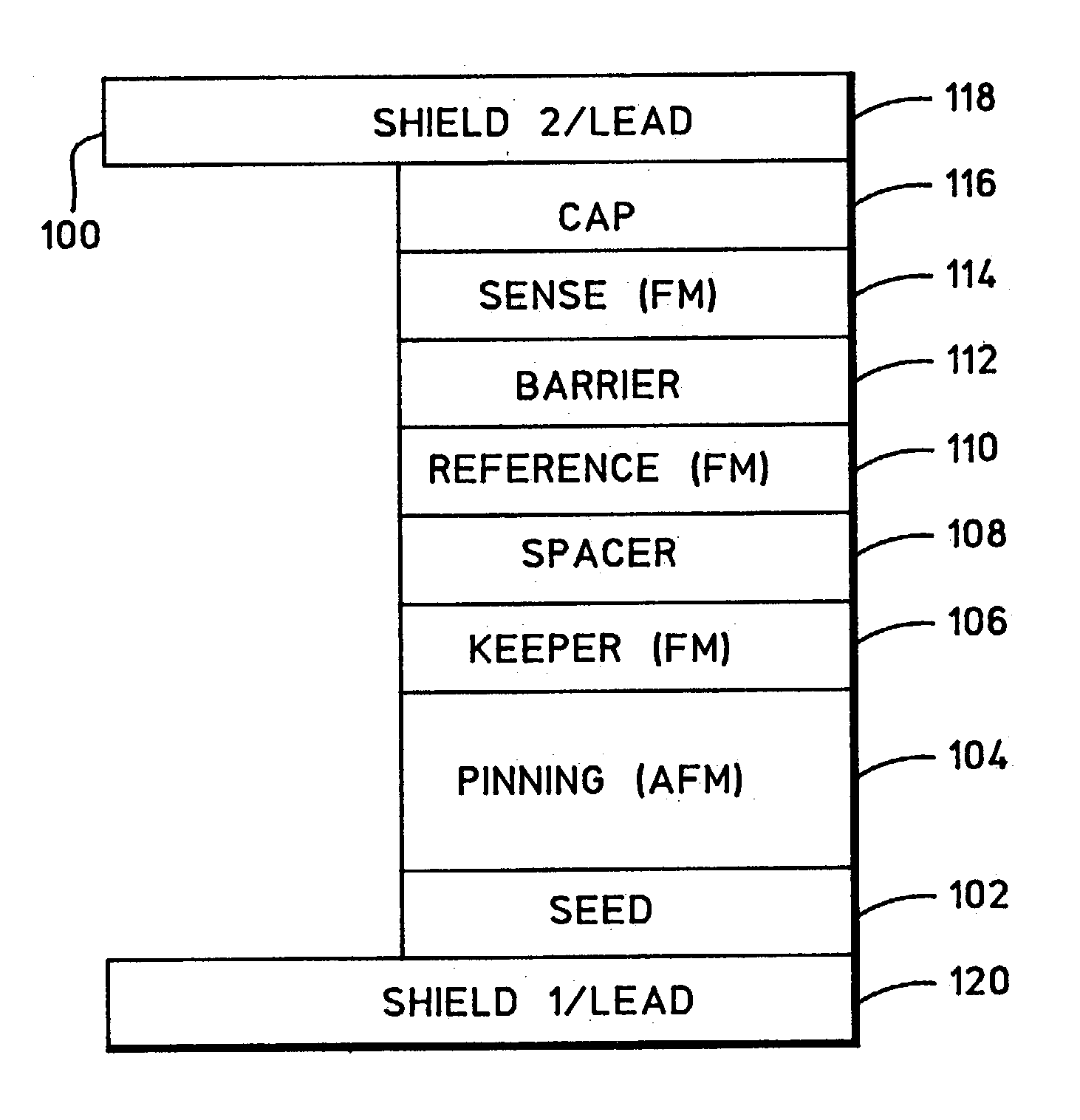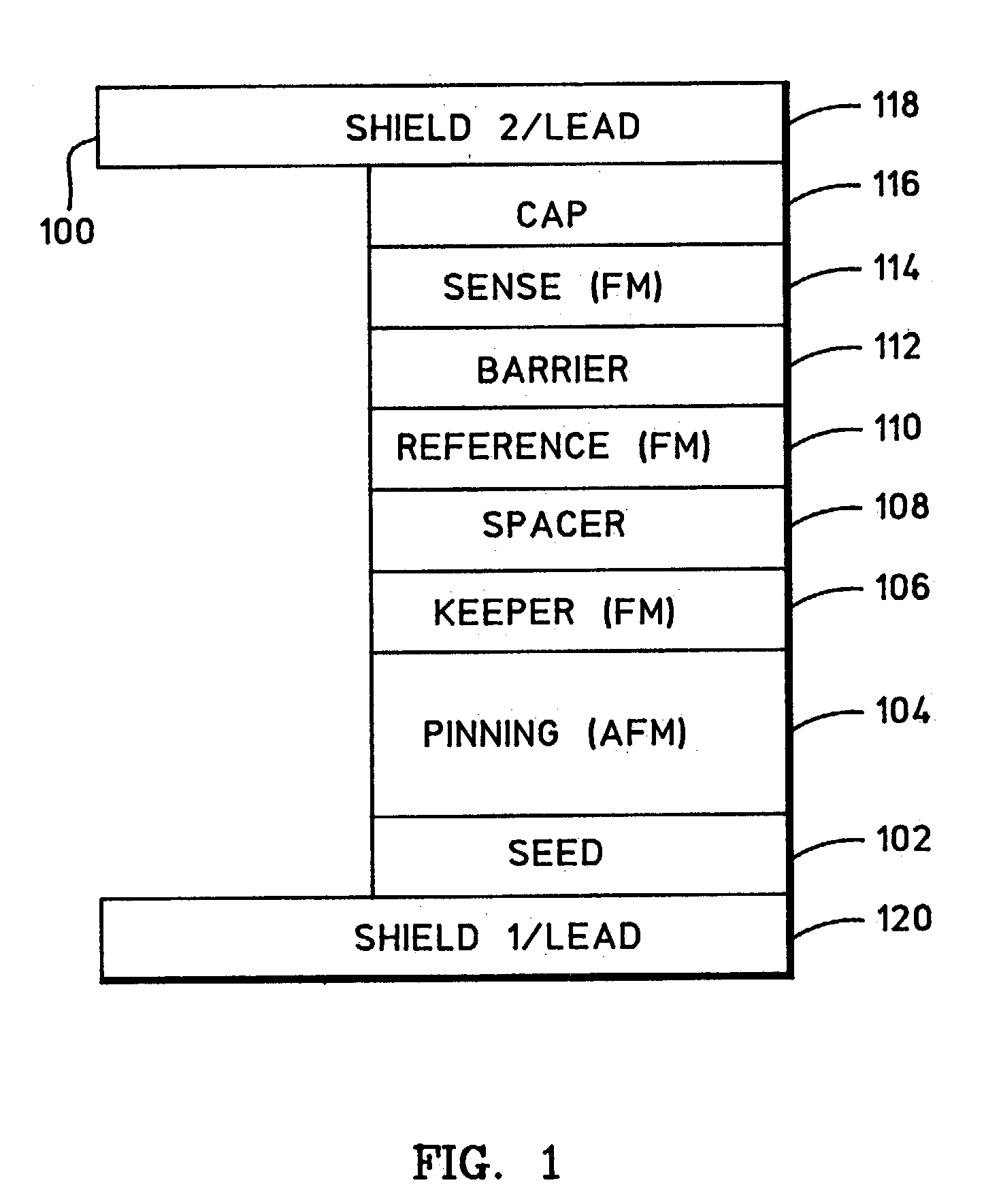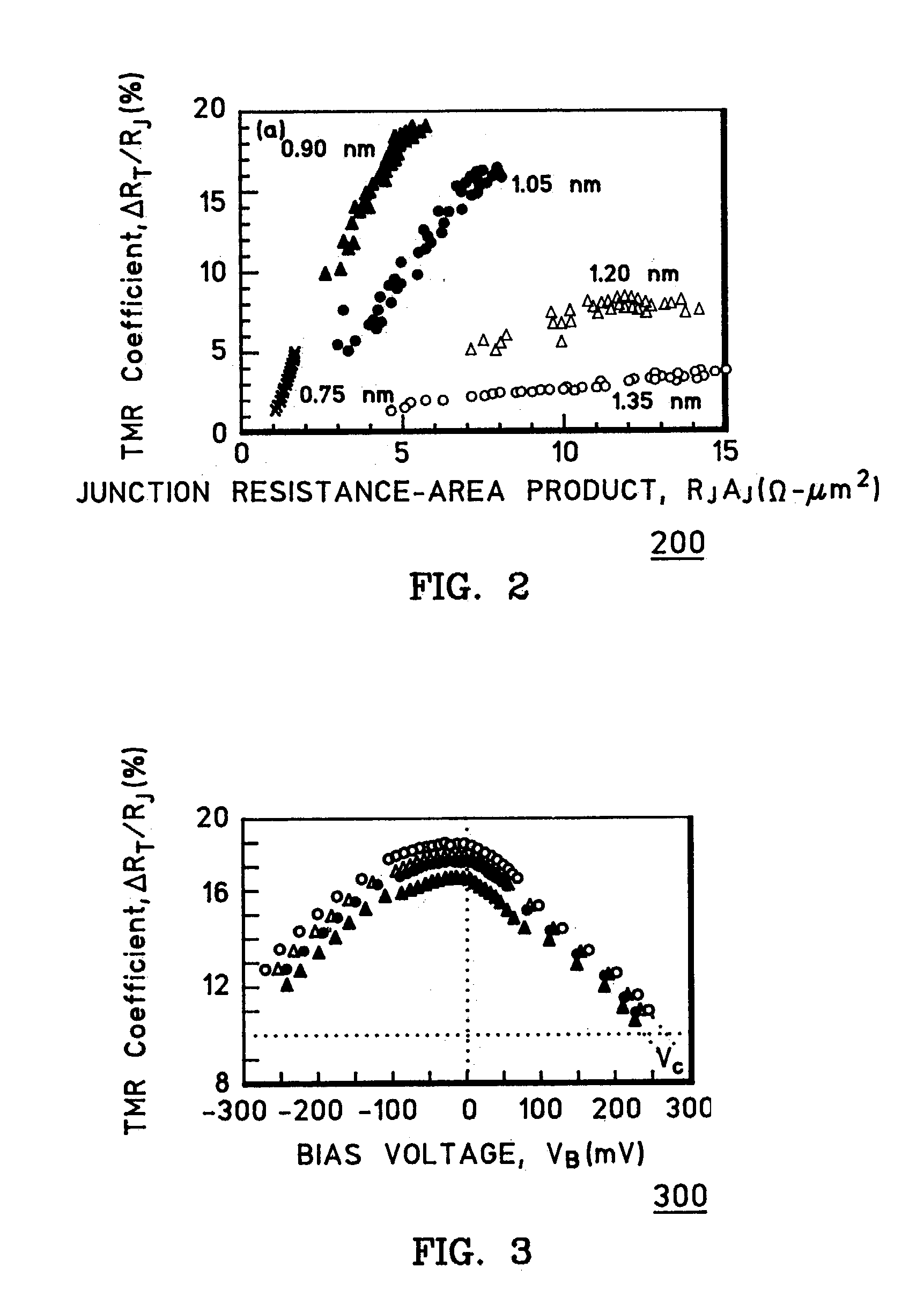Method of forming a barrier layer of a tunneling magnetoresistive sensor
a tunneling magnetoresistive and sensor technology, applied in the field of tunneling magnetoresistive (tmr) sensors, can solve the problems of inability to use tmr sensors in practice as submicron-sized read sensors for magnetic recording at high densities, difficulty in minimizing collisions of few oxygen atoms in plasma, and difficulty in controlling optimal oxygen doping into the bilayer film
- Summary
- Abstract
- Description
- Claims
- Application Information
AI Technical Summary
Problems solved by technology
Method used
Image
Examples
Embodiment Construction
. In the fabrication process of the TMR sensor, the TMR sensor is deposited on a bottom FM Ni--Fe (.about.1 .mu.m) shield layer in the integrated DC magnetron / ion beam sputtering system 500, annealed in a vacuum oven for 5 hours at 265.degree. C., and patterned into a submicron width using photolithography. After the patterning, a longitudinal bias stack having Al.sub.2O.sub.3 / Cr / Co--Pt--Cr / Al.sub.2O.su-b.3 films is deposited on the two side regions. After connecting the TMR sensor with a top FM Ni--Fe (.about.1 .mu.m) shield layer, the TMR sensor is mechanically lapped into a submicron height.
[0038] To characterize magnetic and TMR properties without surrounding magnetic effects, the bottom FM Ni--Fe shield layer is replaced by a bottom lead layer having Ta(3) / Cu(20) / Ta(3) / Cu(20) / Ta(9) films, while the top FM Ni--Fe shield layer is replaced by a top lead layer having Ta(6) / Au(180) films (thicknesses in nm). The bottom lead layer and a TMR sensor having Ta(6) / Pt--Mn(20) / Co--Fe(1.6) / ...
PUM
 Login to View More
Login to View More Abstract
Description
Claims
Application Information
 Login to View More
Login to View More - R&D
- Intellectual Property
- Life Sciences
- Materials
- Tech Scout
- Unparalleled Data Quality
- Higher Quality Content
- 60% Fewer Hallucinations
Browse by: Latest US Patents, China's latest patents, Technical Efficacy Thesaurus, Application Domain, Technology Topic, Popular Technical Reports.
© 2025 PatSnap. All rights reserved.Legal|Privacy policy|Modern Slavery Act Transparency Statement|Sitemap|About US| Contact US: help@patsnap.com



